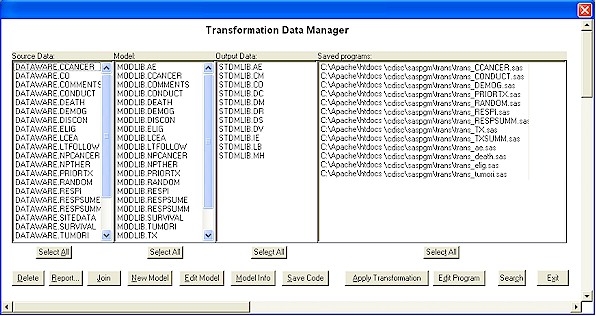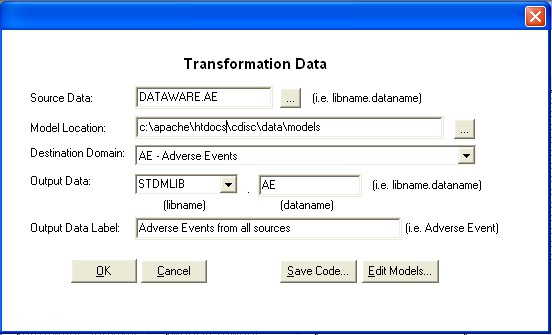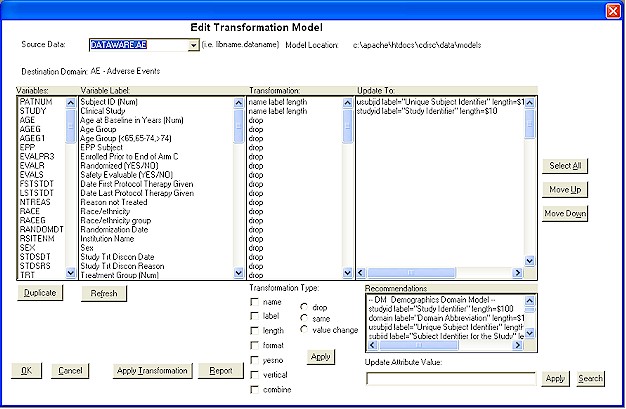|
Accessing Transdata
Most of the features of Transdata can be accessed through the user
interface. This is available through a Transdata icon that is
available at the desktop.

Transdata
This will open the main
"Transformation data manager" screen. You can then navigate to all the
features of Transdata through the buttons and selection lists. Another method to access Transdata is through the macros. This includes
- %finddup
- Finds duplicate variable names in the transformation models.
- %join -
Join input data used in transformation for final output data.
-
%print_model - Generate an output report for all models.
- %trans -
Transfer the data model to a new structure as specified by a
specification.
-
%verification_rep - Generate verification reports for review of
transformation.
Transdata also generates code
that you can submit in batch mode. This allows you to transform
many datasets in an efficient manner.
Touring Transdata
The main screen entitled Transformation Data Manager is the control
center listing all your source and transformation models. It
contains buttons to most of the features of Transdata.

Clicking on the report button will
navigate you to the report generator screen. This allows you to
select the transformation objects and different types of reports.

You can also join datasets and
have the merge program generated through join screen.

New transformation model
information can be configured or an existing transformation can be edited
through the transformation data screen. This contains attributes
pertaining to the transformation.

The transformation model can be edited with CDISC recommended
attributes with the edit transformation model screen.

You can create programs from the
many tools within Transdata. The programs can be viewed and edit
through the edit code screen.

Transdata Work Flow
The main goal for Transdata is to read in source data and transform it
to a standardized destination dataset. In the process, the transformation
is stored in a transformation data model. The
following components are involved within in this process.
- Source Data - These SAS
datasets that are read in as input to be transformed.
- Transformation Model -
Transdata stores the transformation information pertaining to datasets
in datasets. These datasets are referred to as transformation
models or models for short.
- Transformation Code - The
system generates code used to perform the actual data transformation.
- Output Data - These SAS
datasets that are the result of the data being transformed.
The workflow for Transdata is as
follows:
Source Data
 Transformation Model
Transformation Model
 Code Code
 Output
Data Output
Data
Accessing Help
Most screens within
Transdata contain context sensitive help
information. This can be accessed by pressing the F1 key. This
will bring up the help information pertaining to the current active
screen.
|